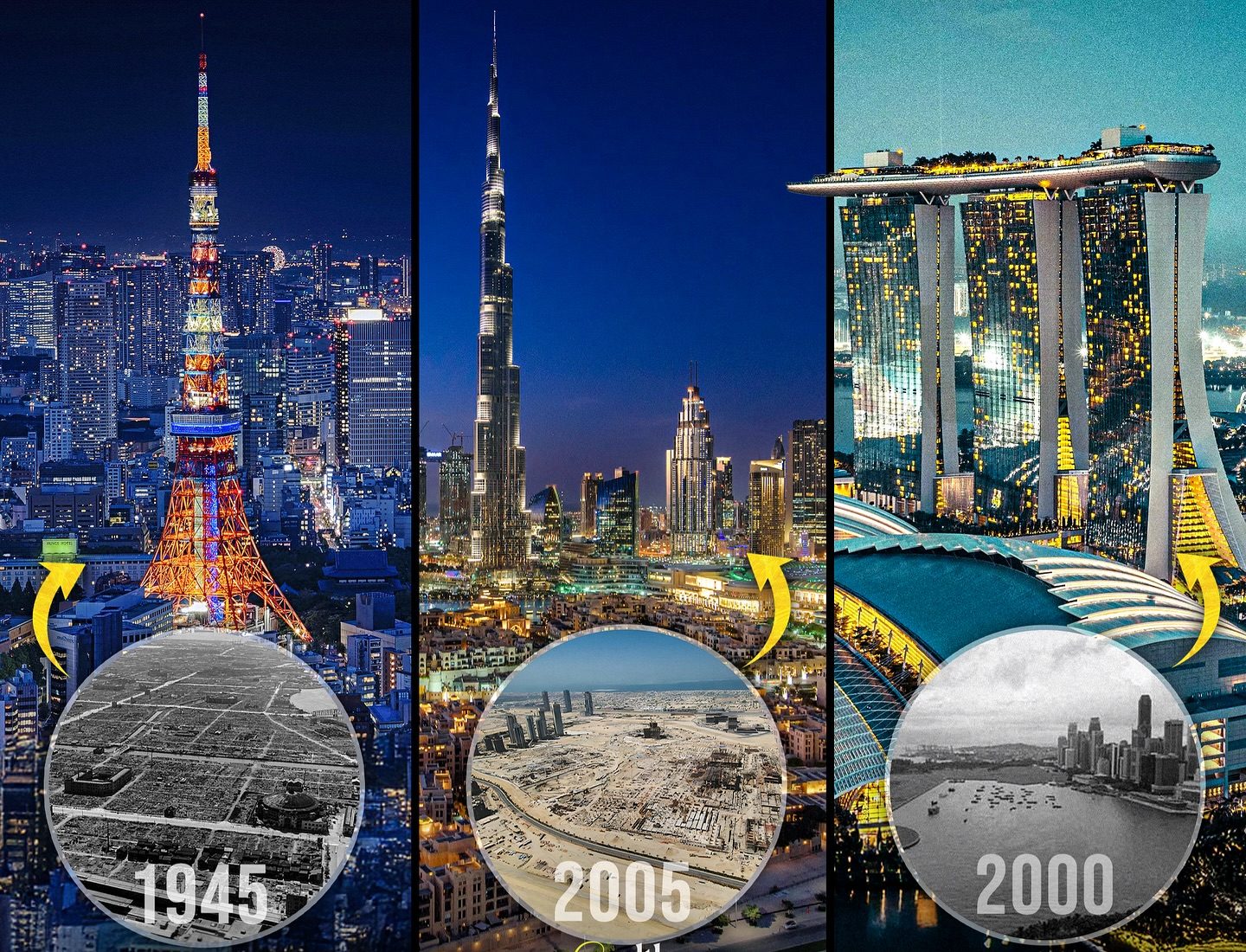THE WORLD’S MOST ICONIC LANDSCAPES — THEN VS NOW
Rio de Janeiro
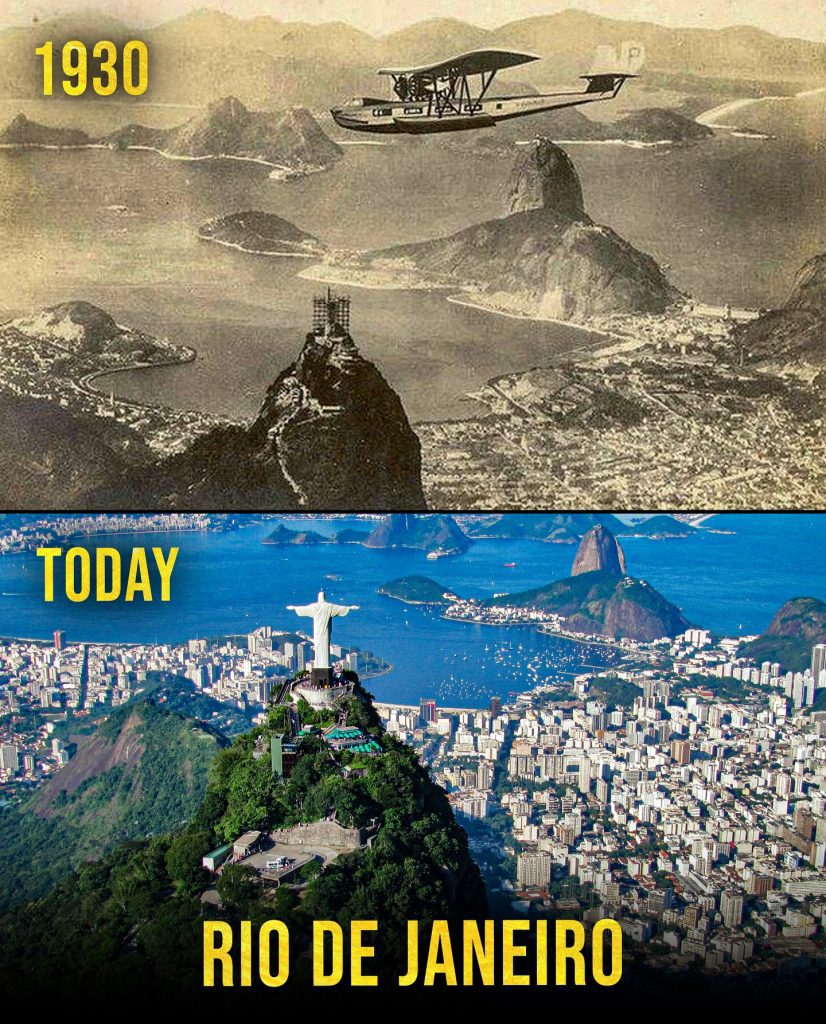
The first time I saw a photo of Rio from the 1930s, I stared at the scaffolding on Corcovado like it was a time machine. Christ the Redeemer wasn’t finished yet, and the city looked like a quiet necklace of neighborhoods draped around a blue bay. Sugarloaf stood the way it still does, ageless and calm, but the foreground felt almost rural—patches of green, low buildings, the sky wide open. It’s the kind of scene that makes you whisper because loud voices feel out of place.
Then you look at Rio today and the whisper turns into a surprised smile. The statue stretches its stone arms above a modern city that feels alive at every hour. Apartment blocks climb the hills, ferries cross the water, and light spreads like a second ocean at night. Rio didn’t lose its drama—it leaned into it. Beaches and mountains still frame the view, but the city fills the frame now, a reminder that some places grow without surrendering the features that made them famous in the first place. If the old photo is a sketch, the new one is a painting in bright, saturated color.
South Korea
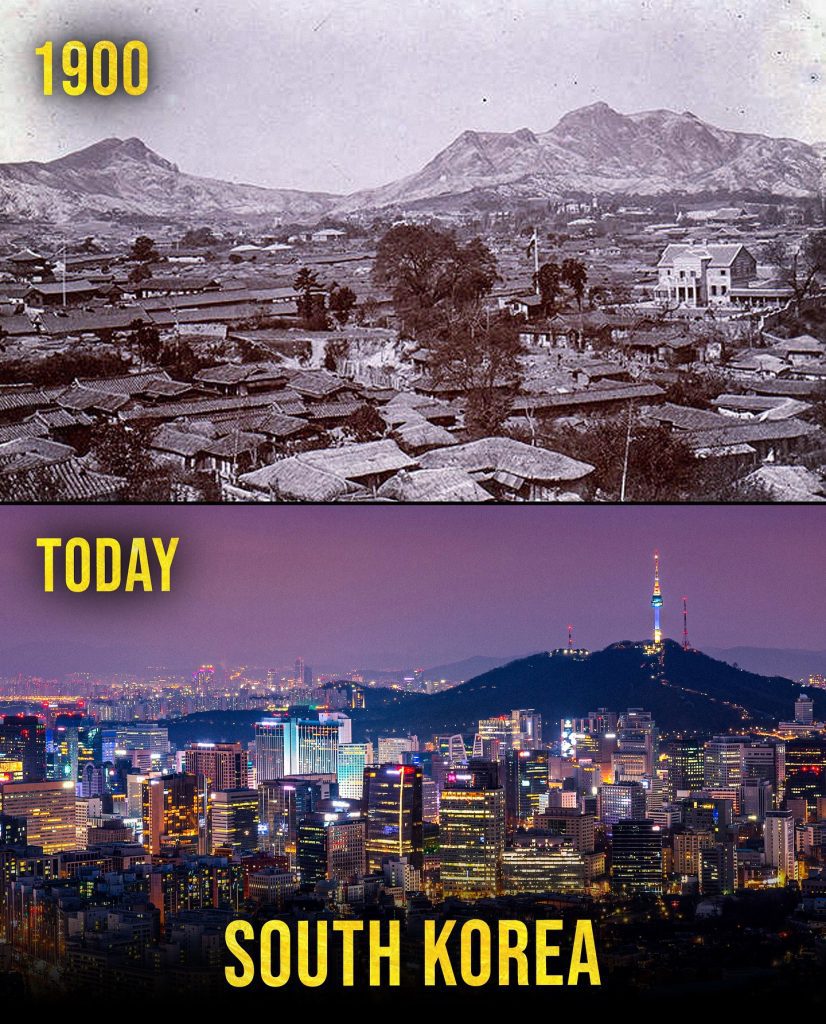
A century ago, the Seoul basin looked like a quilt of fields stitched between low rooftops and ridgelines. Photos from around 1900 show hanok courtyards, unpaved roads, and a skyline ruled by mountains. It’s beautiful in a quiet way, like the exhale between seasons. It’s also a snapshot before history hits fast‑forward: occupation, war, and finally the astonishing surge that economists still point to when they need a case study in growth.
Stand on Namsan today and the lights of Seoul spill to the horizon. Neon glows off glass, the N Seoul Tower needles the dusk, and the Han River carries reflections like moving gold. The transformation didn’t happen by accident. It came from hard choices, education, manufacturing muscle, and a culture of building for tomorrow even when today was difficult. The old photo carries the hush of a village; the new one hums like a server room. Same valley, new tempo.
Canada
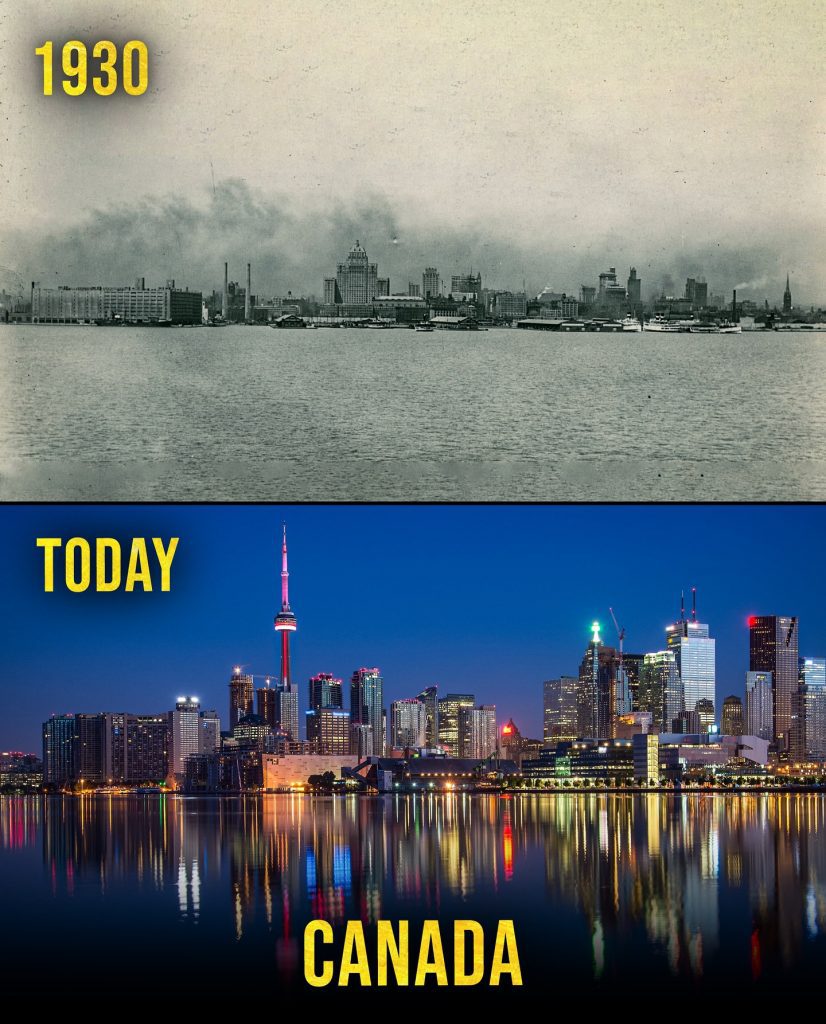
Toronto’s old waterfront images feel like an echo: smokestacks, low warehouses, a skyline that barely sips the sky. You can almost hear the foghorns and the slow creak of freighters sliding into harbor. It’s practical and plain, a working port that has more grit than glitter. The lake is the star; the city is a supporting actor.
Then comes the leap. The CN Tower rises in the 1970s and changes the story forever. Today, Toronto’s skyline is a mirrored chorus—towers layered behind towers, the red beacon on the CN Tower sweeping across the lake like a metronome for a 21st‑century city. You still get the working‑port honesty on the edges, but the center is something else: banking halls, tech offices, condo clusters, and a waterfront that invites people in rather than pushing them back. In the old photo, the water keeps its distance; in the new one, it’s a partner. The city learned to face the lake and grow with it.
China
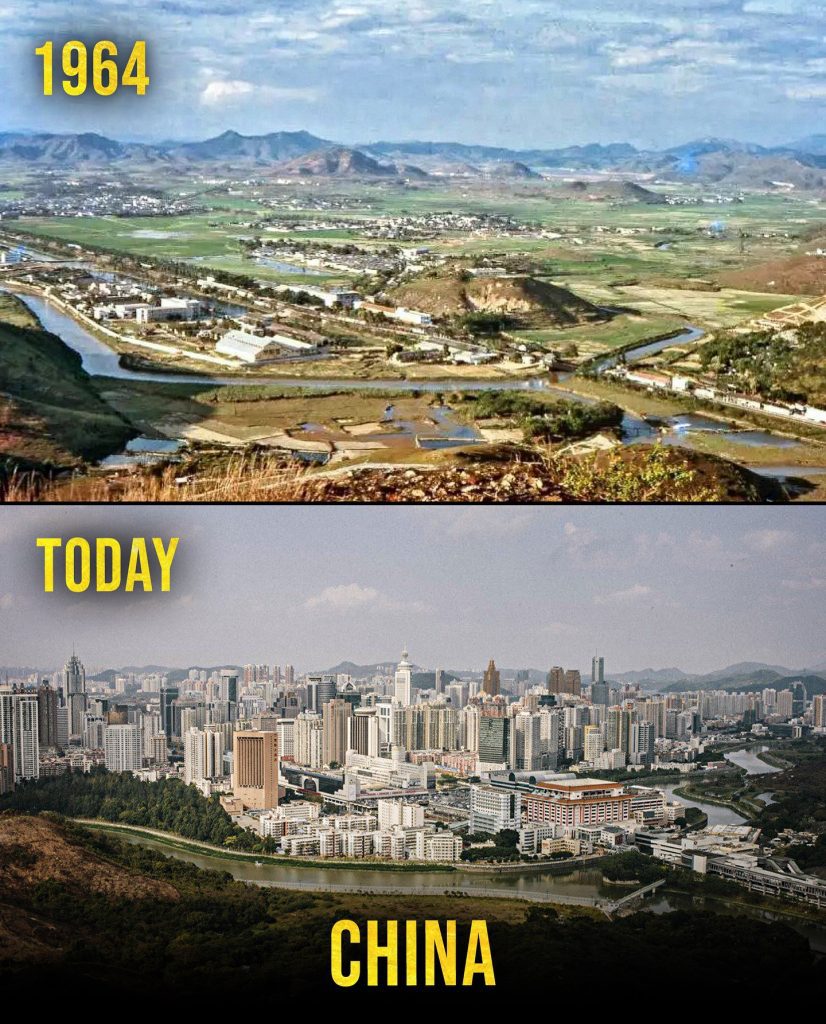
There’s a photo that gets passed around a lot—green fields rolling toward low factories and a river that wanders more than it works. The date puts it in the mid‑1960s, and if you’ve ever flown over southern China today the contrast is almost unbelievable. The fields are a memory; the factories are vertical; the river is threaded with bridges. What used to be a valley feels like a motherboard—dense, connected, built for speed.
The most famous example of this change is Shenzhen, a fishing town turned megacity after it became a special economic zone in 1980. But the story spreads far beyond one name. Across China, cities stacked apartments and offices in new districts, pulled subways through fresh tunnels, and set entire neighborhoods on timetables measured in quarters rather than decades. You can be nostalgic for the quiet of the old photo and still feel awe at the scale of what came next. If the first view says “later,” the second one insists “now.”
Abu Dhabi
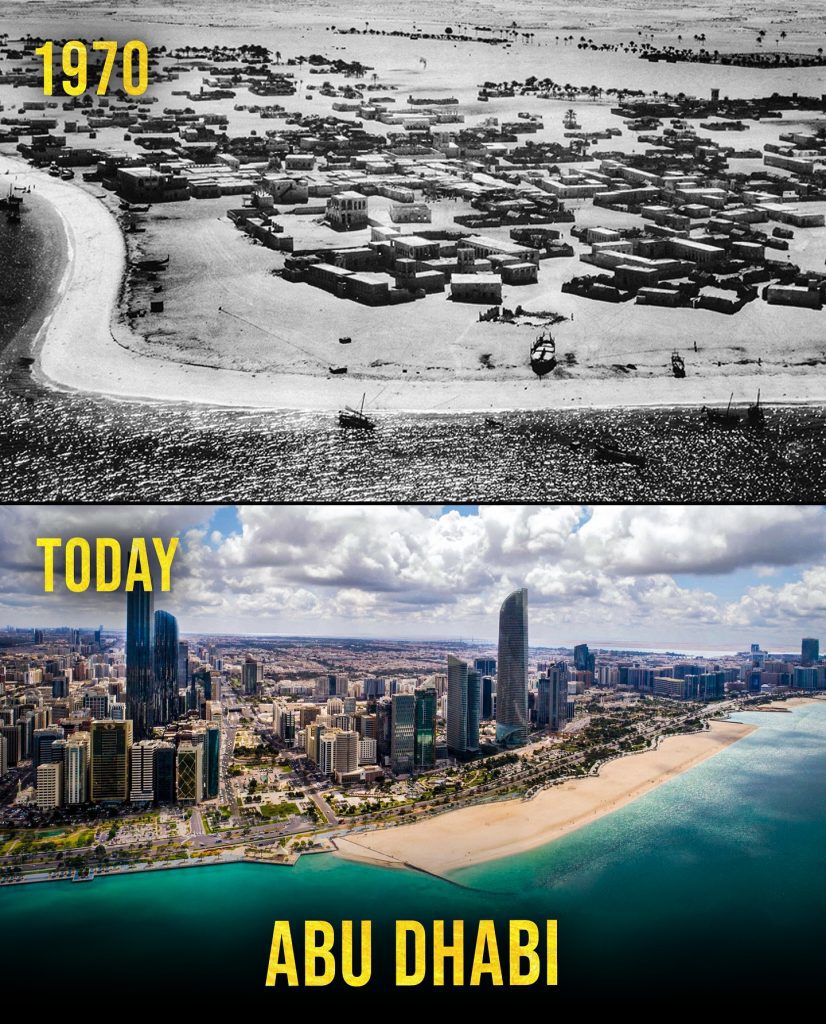
Black‑and‑white Abu Dhabi from around 1970 looks almost like a mirage—pearling boats anchored in shallow water, sandy lanes curling between low concrete and coral‑stone houses, and the Gulf bright and close. Oil discoveries had begun to change everything, but the city still wore a village’s shoes. You get the sense of a place ready to move, not yet in motion, poised on the starting line of a long race.
Fast‑forward and the shoreline is drawn with glass and steel. Corniche parks shade joggers, towers rise like spears, and the turquoise water frames it all in postcard colors. What always amazes me about modern Abu Dhabi isn’t just the height of the buildings; it’s the order of the plan—the grids, the green strips, the way the city meets the sea with promenades instead of work yards. The transformation didn’t erase the waterline life; it elevated it. The dhows still sail; they just share the backdrop with a skyline that can hold its own against any on Earth.
Singapore
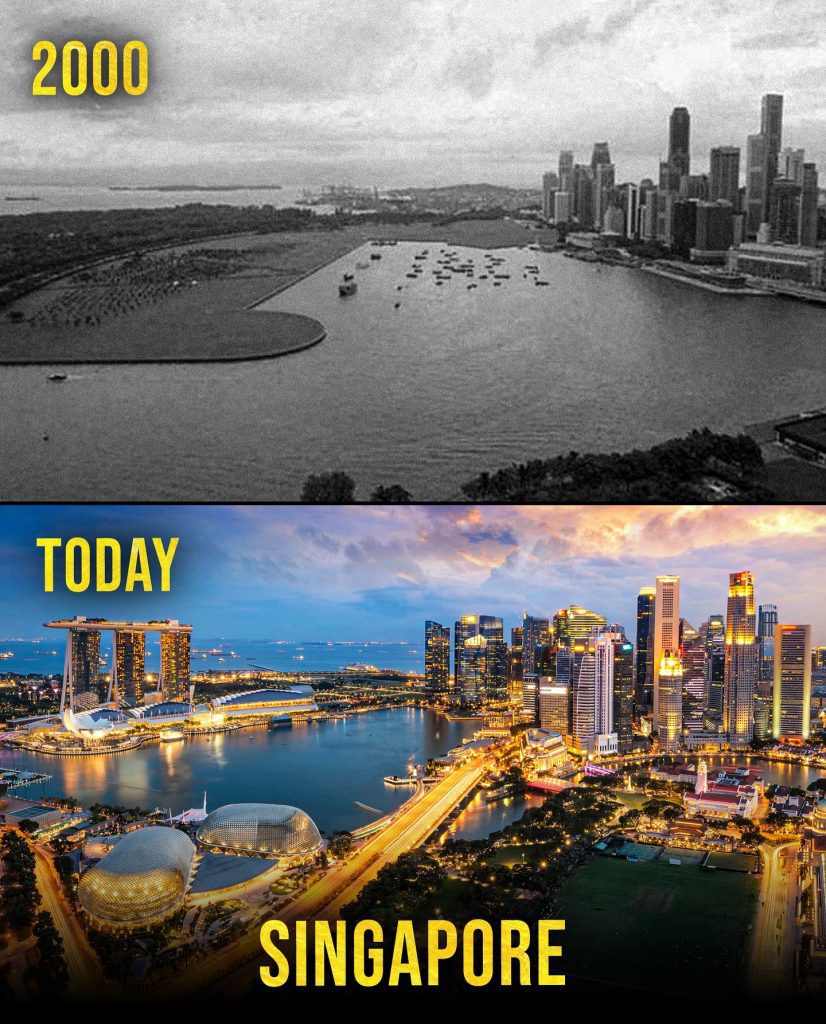
Old Marina Bay photos from around 2000 already look modern by most standards—there are towers, cranes, and a harbor that hums. But the ground itself was still changing. Singapore spent decades reclaiming land from the sea, re‑shaping its own coastline like a sculptor who isn’t satisfied until the form is exactly right. Then, in one breathtaking decade, Marina Bay became a symbol. The lotus‑like ArtScience Museum opened. The helix bridge unfurled. And Marina Bay Sands—those three towers balancing a sky park like a ship—turned the skyline into something instantly recognizable from space.
The effect at night is almost theatrical. The water mirrors the lights, the skyline reads like a line of calligraphy against the dark, and the reclaimed shoreline does what great design always does: it makes the complicated look inevitable. The before image reminds you that the stage didn’t exist. The after shows a city that built its own stage and then filled it.
Dubai
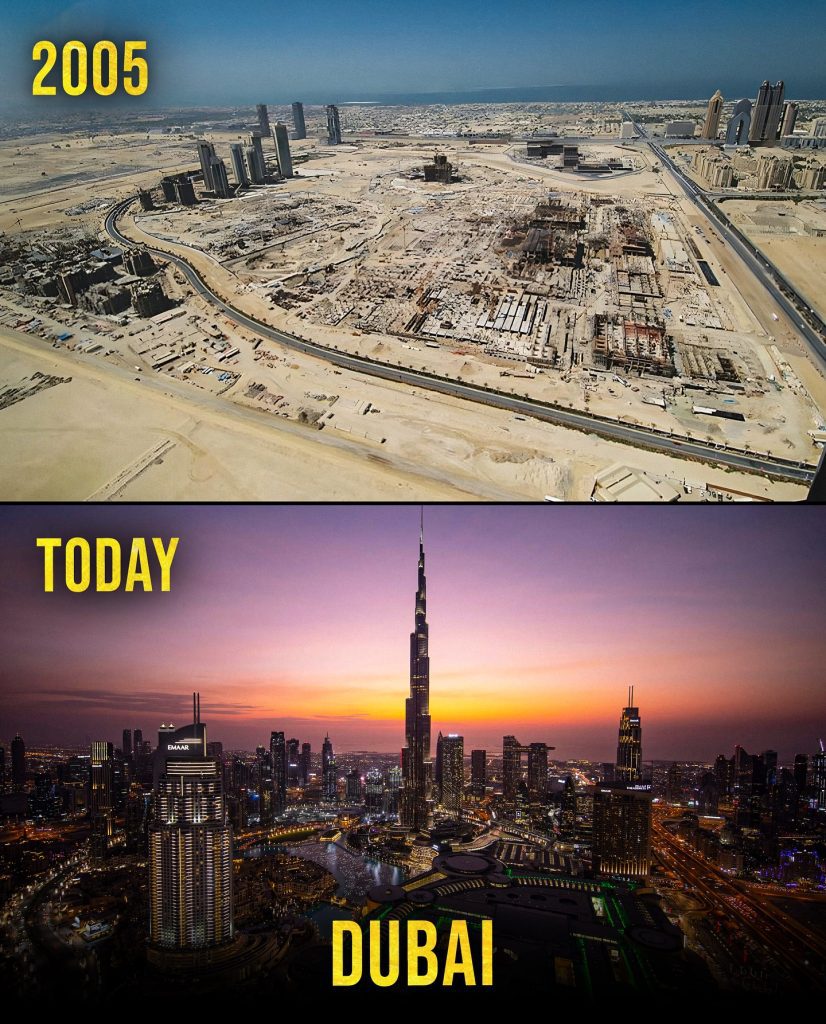
The Dubai “then vs now” might be the most dramatic of all because the “then” isn’t very long ago. A 2005 shot of the Dubai Creek area and the early plots around what would become Downtown Dubai shows sand, roads on the verge of existing, and just a handful of towers. You can sense the plan, but you can’t see the city yet. It’s the pencil outline before the ink.
Today the Burj Khalifa punctuates the sky like an exclamation mark. Highways braid through districts that didn’t exist when some of us were in school. The Dubai Fountain throws arcs of water into the desert air, and the skyline glows like a circuit board. There’s debate to be had about pace and sustainability in any fast‑growing city, but the visual truth is undeniable: Dubai took a blank canvas and painted it with speed. The old frame makes the new one feel like a magic trick.
Why these “before and afters” matter
It’s tempting to treat these pairs as postcards and stop there: “Look how far we’ve come.” But the reason they stick with me is not just the height of the towers or the flash of new bridges. It’s what they reveal about time and decisions. Cities don’t grow because a handful of buildings appear; they grow because generations choose a direction and keep walking, even when the road is dusty or the budget is tight.
Rio built an icon during hard years and kept its natural drama at the center of the frame. Seoul turned war‑scarred valleys into a connected metropolis with a pulse you feel in your bones. Toronto reimagined a working waterfront into a front porch. Shenzhen became shorthand for possibility and the speed of a new economy. Abu Dhabi took oil money and drew a city that still speaks to the sea. Singapore reclaimed not just land but identity, designing a bay worth lingering over. Dubai embraced audacity and made the future visible from a plane window.
There’s caution inside these stories, too. Every skyline casts a shadow. Growth is thrilling and difficult at the same time, and the pressures—on housing, on water and power, on air and land—are real. The trick is learning from the first wave so the second wave can be kinder. A city isn’t a trophy; it’s a promise you have to keep every day with transit that works, parks that welcome everyone, and neighborhoods where history isn’t scrubbed away in the shine.
Still, when I look at these “then vs now” images, I feel something simple and rare: hope. Not a naive hope that every project succeeds or that growth solves everything, but a grounded hope that humans can build thoughtfully, that they can recover from loss, and that they can imagine a horizon and then walk toward it together. Fifty years can hold more change than five hundred when intention meets effort. The skyline is just the proof we can see.

